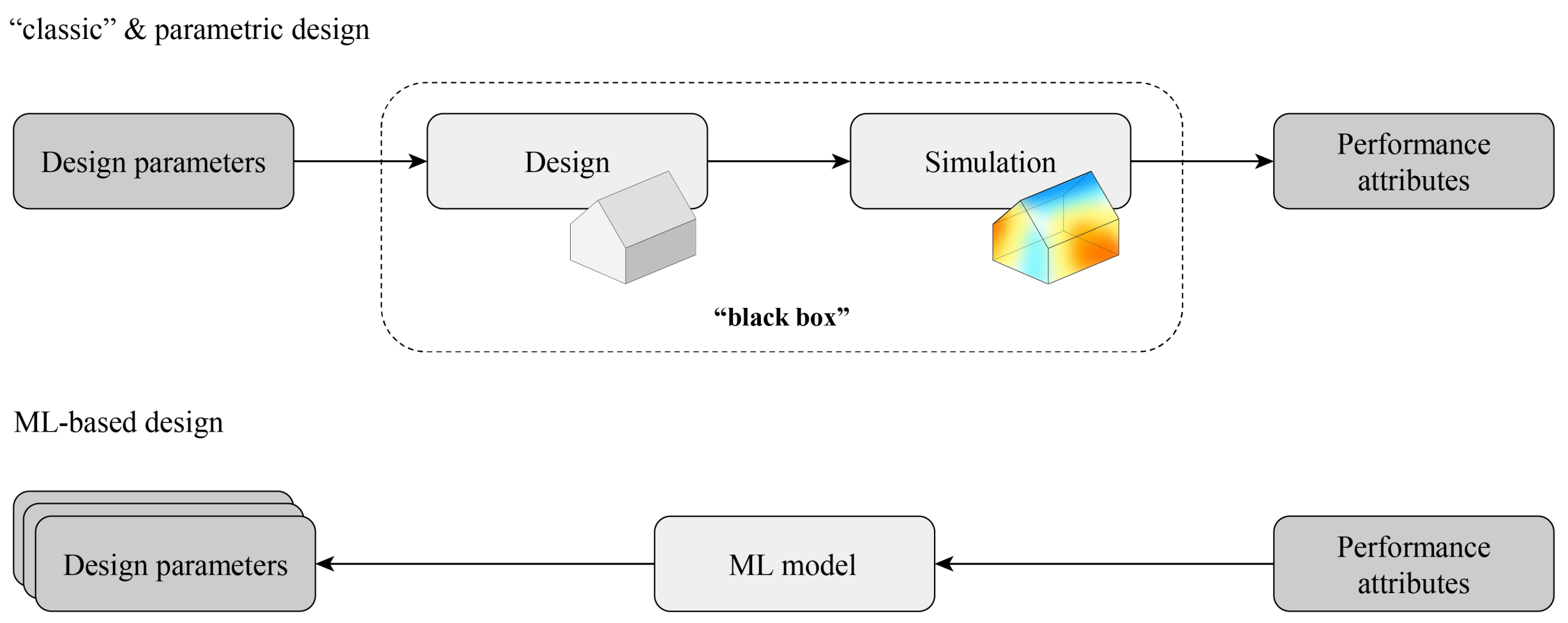AAAD: AI-Augmented Architectural Design
Traditionally, architectural design is an iterative process and involves combining and optimizing many criteria and constraints. For performance-driven design, architects and engineers create parametric design models to generate, simulate and evaluate many design instances, in order to gather performance feedback on design alterations. However, this is typically a hierarchical process, unable to deal with multiple concurrent objectives and only investigating a narrow spectrum of the design space. Instead of tuning input parameters until the result meets certain performance criteria, we envision that machine-learned models of the design problem will allow us to find and explore design instances in the proximity of specified performance goals. In this way, the designer can discover unexplored areas within the design space and solutions that were previously intangible.

Approach: This research project addresses this unsatisfactory situation though creating a toolkit for machine-learning-based architectural design. We develop and validate our AI-Augmented Architectural Design (AAAD) toolkit with a generic approach through case studies that are based on two different design categories: The first category concerns surfaces, which are evaluated based on their fabricability (for 3D contour printing), acoustics, as well as on environmental performance or sunlight protection while targeting architectural applications such as acoustic panels and façade panels. The second category concerns discrete element assemblies, which comprises load-bearing structures made of columns and beams. This category is evaluated based on structural or environmental performance goals. We will first divide each of the design problems into subproblems and incrementally increase the complexity by successively integrating more performance measures or testing different design data representations. Throughout the project, we will redefine and regenerate the synthetic datasets and adapt the problem definition based on the performance of the respective machine learning (ML) models and the discovery of new design spaces. This will be facilitated through design interfaces developed in parallel, that allow for fast interaction and a flexible selection of in- and outputs.
Impact: This approach will allow for generic, reusable interfaces and will form an open-source and extendable toolkit based on ML methods that can be integrated into CAD software. The ultimate goal of this project is to augment the designer’s creative and analytical capabilities in the decision-making process by creating interactive design environments and thus augment computational design methods in architecture.
This research project is one of the collaborative projects supported by the external page Swiss Data Science Center (SDSC).
Released software outcome of AAAD's project:
AIXD website
Duration: September 2021 - 2023
Principal Investigators:
- Prof. Matthias Kohler
- Prof. Fabio Gramazio
- Dr. Romana Rust
- Dr. Aleksandra Apolinarska
- Gonzalo Casas
Partners: Dr. Kurt Heutschi (Empa), Christian Frick (Rocket Science AG), Jürgen Strauss (Strauss Electroacoustic GmbH), Prof. Dr. Arno Schlüter (ETH Zurich), Prof. Dr. Dr. Norman Sieroka (University of Bremen), Dr. Luis Salamanca (SDSC), Dr. Fernando Perez-Cruz (SDSC)